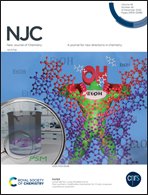Facile and single step produced Ba:Sn-codoped PEDOT:PSS thin film electrode with improved optics and electrochemical properties for transparent and flexible supercapacitor applications
Abstract
In this study, for the first time, we propose the development of high-performance and flexible supercapacitors using different ratios (0, 0.5, 2 and 3 mg ml−1) of barium–tin (Ba:Sn)-codoped poly(3,4-ethylenedioxythiophene):poly(styrene sulfonate) (PEDOT:PSS) thin film electrodes. Structural, optical and morphological studies were performed to understand the nature of thin films. Electrochemical properties were investigated by cyclic voltammetry (CV), galvanostatic charge/discharge (GCD) and electrochemical impedance spectroscopy (EIS) tests. The 3 mg ml−1 Ba:Sn-codoped electrode exhibited 7.7 times higher capacitance than the undoped PEDOT:PSS electrode material, and also the potential range reached 2.0 V in 3.0 M KCl aqueous electrolyte. The Ba:Sn-codoped PEDOT:PSS thin film electrodes produced by a facile and single step will provide new dimensions towards designing cost effective, environmentally friendly, flexible, transparent and all solid-state supercapacitors with improved electrochemical performance.



 Please wait while we load your content...
Please wait while we load your content...